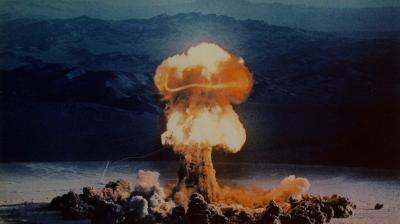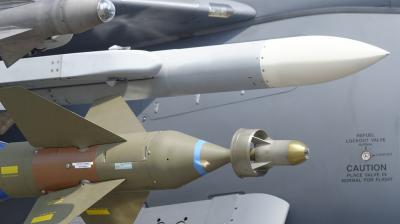Nuclear risk reduction interim success for NPT Review Conference
This publication was previously published by the European Leadership Network (ELN).
The Nuclear Non-Proliferation Treaty (NPT) is often called the cornerstone of the global nuclear non-proliferation regime and an essential foundation for the pursuit of nuclear disarmament. Every five years, its member states (all countries in the world, except India, Israel, North Korea and Pakistan), assemble in a Review Conference to evaluate the efforts so far and to set goals for the coming years.
The NPT Review Conference scheduled for April-May 2019 has been postponed due to the COVID-19 crisis. Although the reason is awful, the postponement itself may give diplomats extra time to ensure a successful outcome of the Review Conference. During the last Review Conference in 2015 the participating states failed to reach any consensus, and a second failure risks eroding the broad international support for the NPT and the norms against nuclear weapons it represents.
So far, progress on key issues such as nuclear disarmament or the Weapons of Mass Destruction Free Zone in the Middle East, which contributed to a lack of consensus during the Review Conference of 2015, is barely noticeable. To enhance the norms which the NPT represents, progress should be made visible during the Review Conference. Nuclear risk reduction might be a feasible area to do so.
Nuclear risk reduction, sometimes also called ‘strategic risk reduction’, entails measures contributing to limiting the risk that nuclear weapons will ever be used, on purpose or by accident. As long as a nuclear-weapon-free world has not been accomplished, the risk that nuclear weapons would ever be used should be limited as much as possible. From this perspective, nuclear risk reduction is an interim measure within the broader NPT goal of working towards nuclear disarmament.
In the past few years nuclear risk reduction received attention in several fora outside the NPT. It was one of the discussion topics in recent P5-meetings (the five ‘recognized’ nuclear-armed states in the NPT: China, France, Russia, the United Kingdom, and the United States), it is the topic of one of the three working groups of the US-initiated ‘Creating an Environment for Nuclear Disarmament’ (CEND) process, and the United Nations Institute for Disarmament Research (UNIDIR) has published a number of excellent reports on it.
A benefit of the concept of nuclear risk reduction is that it can be discussed without directly touching on sensitive and politically polarized issues such as the perceived value or non-value of nuclear weapons from a political-military perspective. Although it could be argued that a higher risk of nuclear weapons being used increases their deterrent effect, discussions on risk reduction measures generally refrain from questioning the usefulness of nuclear deterrence and are not directly aimed at limiting any deterrent effect of nuclear weapons. This makes nuclear risk reduction an issue on which some agreement and concrete steps are possible, even in the current polarized times in which actual disarmament efforts have mostly stalled.
During the NPT Review Conference the participating states could discuss risk reduction measures and try to agree to some concrete policy steps. Such steps could signal that the NPT is still an effective treaty in contributing to limiting the risks of nuclear weapons, even in the current geopolitical environment where nuclear disarmament is not being achieved quickly. There is a variety of concrete risk reduction measures that could be discussed. They could be grouped in four categories: declaratory nuclear policies; communication and cooperation; operational measures; and limiting roles, types and numbers.
Declaratory policy measures are public statements which could (re)assure the world that the risk of nuclear weapons being used is taken seriously by (some of) the states possessing these weapons. Such declaratory policies may be significant in keeping the threshold for any use of nuclear weapons as high as possible. One could think of a statement similar to that of Ronald Reagan and Mikhail Gorbachev in 1987, expressing their conviction that nuclear war can never be won and should never be fought, but also of negative security assurances or declarations of no first use issued by all or some of the NPT nuclear weapon states.
Measures aimed at increasing communication and cooperation could consist of agreements regarding crisis management policies, ensuring clear lines of (crisis) communication, transparency and information sharing, and training, which could contribute to preventing (inadvertent) escalation of any conflict to nuclear levels.
Operational measures that could be discussed can be aimed at limiting the risk of unintentional use, but also at giving decision-makers more time for deliberation; the more time they have to verify a perceived need to use nuclear weapons in times of stress and (potential) emergency, the less risk there is of decisions being based on misinformation, miscommunication or misperception. Examples of such policy options are de-entanglement of command and control systems, de-targeting and de-alerting, as well as adding decision moments to launch procedures.
Last but certainly not least, in the category of limiting roles, types and numbers, the NPT member states could discuss issues such as limiting the role of nuclear weapons in doctrines and postures, limiting the types of nuclear weapon systems (especially nuclear weapon types that by their very nature lower the threshold for use and could generate confusion between conventional and nuclear weapons during crisis situations), and limiting the locations and numbers of nuclear weapons.
Even if the NPT Review Conference could result in a coordinated statement or agreement on only one of these possible risk reduction options, this would already be a small success, showing that the NPT framework is still relevant and can indeed lead to concrete multilateral action. Again, it would be a limited and short-term interim measure only, but any step towards decreasing the risks of nuclear weapons use can only be welcomed.
Critics may claim that discussing nuclear risk reduction indirectly means accepting the nuclear arsenals and will diverge attention from actual disarmament efforts and consequently result in accepting a status quo situation. Yet, nuclear risk reduction could be considered nothing more than an interim measure parallel to nuclear disarmament efforts, and does not stop, delay or undermine these efforts. Nuclear risk reduction measures are short-term interim steps that would benefit any state, nuclear-armed or not. The NPT Review Conference is an excellent forum to discuss this issue and to reach some agreement on concrete steps to reduce nuclear risks.
Follow @Sicovandermeer and @clingendaelorg on Twitter.





